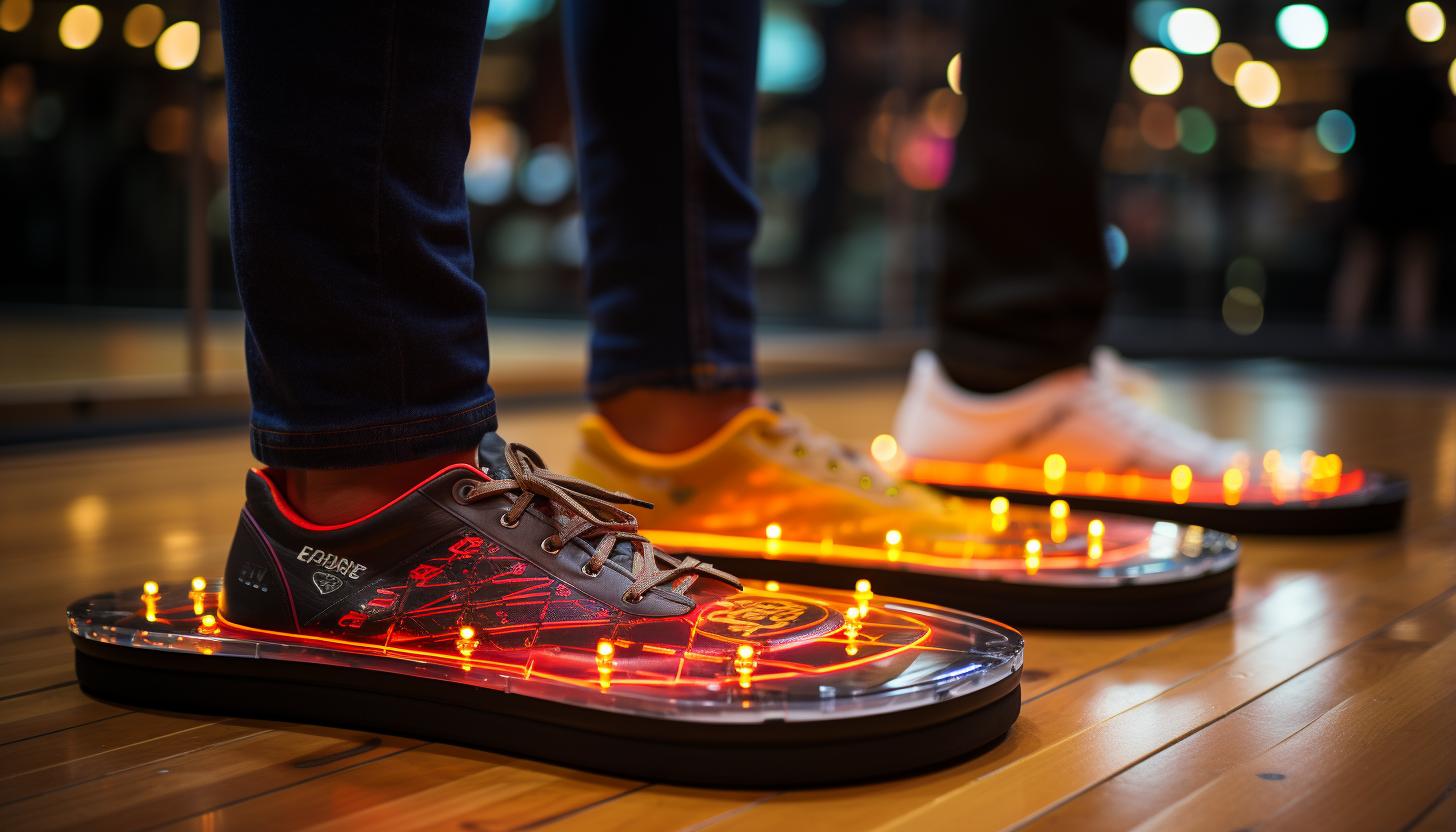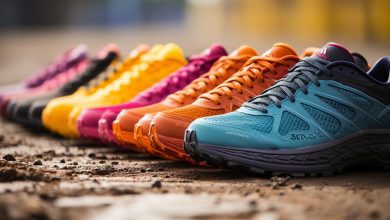The Importance of Proper Shoe Fit: Tips for Measuring and Trying Shoes

Do you ever wonder why your shoes never seem to fit quite right? It could be because you’re overlooking one crucial detail: proper shoe fit.
In this article, we will delve into the science behind finding the perfect fit for your feet. From measuring and trying on shoes to addressing common fit issues, we’ll equip you with the knowledge and tips you need to ensure comfort and support every step of the way.
Get ready to step up your shoe game!
The Science of Shoe Fit: Understanding the Importance

You might not realize it, but understanding the science behind shoe fit is crucial for finding the perfect pair. Shoe fit research and the biomechanics of shoe fit have revealed fascinating insights into how our feet interact with footwear. By delving into this scientific realm, we can gain a deeper understanding of why finding the right shoe size is so important.
Shoe fit research involves studying various factors that contribute to comfort and performance. Scientists examine aspects such as foot anatomy, pressure distribution, and movement patterns during walking or running. These studies have shown that ill-fitting shoes can lead to discomfort, pain, and even foot conditions like bunions or blisters.
The biomechanics of shoe fit focus on how shoes affect our gait cycle and overall foot function. When you wear properly fitting shoes, they provide necessary support and stability, helping to align your body from your feet up through your legs and spine. On the other hand, wearing shoes that are too tight or loose can disrupt this alignment, leading to inefficient movement patterns and potential injuries.
Understanding the science behind shoe fit empowers you to make informed decisions when selecting footwear. It highlights the importance of measuring your feet regularly and trying on multiple sizes before settling on a pair. By prioritizing proper shoe fit based on scientific knowledge, you can ensure optimal comfort, performance, and long-term foot health.
Measuring Your Feet: The Key to Finding the Perfect Fit

When it comes to finding the perfect fit, make sure to start by measuring your feet accurately. Proper foot measurement techniques are crucial in ensuring the right shoe size and preventing discomfort or injury caused by ill-fitting shoes. While there are various methods you can use to measure your feet at home, it is always recommended to seek professional shoe fittings for accuracy and expert advice.
Here is a table outlining some common foot measurement techniques:
| Technique | Description |
|---|---|
| Brannock Device | A specialized tool used in shoe stores for precise measurements of length, width, and arch height. |
| Ruler | Using a ruler or tape measure, measure from the heel to the longest toe and across the widest part of the foot. |
| Sock Test | Wearing socks that you would typically wear with shoes, trace around your foot on a piece of paper and measure its length and width. |
| Online Tools | Some websites offer virtual tools that guide you through self-measuring processes using household items like credit cards or coins. |
While these methods can provide a general idea of your shoe size, nothing beats the expertise of a professional fitting. Professional shoe fittings take into account not only measurements but also factors such as foot shape, arch type, and any specific needs or preferences you may have.
Trying on Shoes: Tips for Evaluating Comfort and Support

Evaluating comfort and support is essential when trying on shoes to ensure a proper fit. It’s not just about finding the right size; you also need to consider how the shoe feels on your feet. Comfort is subjective, so it’s important to pay attention to any areas of discomfort or pressure points. Walk around in the shoes and make sure they provide adequate cushioning and support for your arches.
In addition to comfort, durability should be evaluated when trying on shoes. Look for high-quality materials and sturdy construction that will withstand regular wear and tear. Check the soles for good traction, as this will help prevent slips and falls.
While comfort and durability are key factors, style should also be considered. After all, you want a shoe that not only fits well but also looks great with your outfits. Look for styles that reflect your personal taste while still being versatile enough to pair with different outfits.
Common Fit Issues: How to Identify and Address Them

Identifying and addressing common fit issues is crucial to finding a shoe that feels comfortable and supportive on your feet. When it comes to shoe sizing, there are several common problems that people often encounter.
One of the most prevalent issues is shoes that are too tight or too loose. If your shoes feel too tight, they can cause discomfort and even pain, while loose-fitting shoes can lead to instability and blisters.
To address these fit issues, there are some solutions you can try. If your shoes are too tight, you may need to go up a half size or opt for a wider width. On the other hand, if your shoes are too loose, adding insoles or wearing thicker socks can help provide a better fit. Additionally, lacing techniques such as the heel lock method can help secure your foot in place and prevent slipping.
Another common fit issue is arch support. Many people have high arches or flat feet, which can result in discomfort and lack of support in certain shoe styles. To address this problem, look for shoes with built-in arch support or consider using orthotic inserts for added comfort.
Finding the Right Shoe Size: Demystifying Size Charts and Measurements

Finding the right shoe size can be confusing, but understanding size charts and measurements can help simplify the process. When it comes to shoe size conversion, navigating international sizing systems can be a challenge. Different countries use different sizing scales, so it’s important to familiarize yourself with the specific system used in the country you’re purchasing from. Many online retailers provide conversion charts that allow you to easily compare sizes across different systems.
In addition to international sizing, special considerations should also be made for those with wide or narrow feet. If you have wide feet, look for shoes labeled as ‘wide’ or ‘W’ for a more comfortable fit. These shoes are designed with extra width in the toe box area to accommodate wider feet. On the other hand, if you have narrow feet, look for shoes labeled as ‘narrow’ or ‘N’. These shoes are designed with a narrower width to prevent your foot from slipping around inside.
When measuring your foot, follow these steps:
1) Stand on a piece of paper and trace an outline of your foot.
2) Measure the length from heel to longest toe and record this measurement in inches or centimeters.
3) Measure the width at its widest point and record this measurement as well.
Conclusion
Now that you know the importance of proper shoe fit, measuring and trying on shoes should be a breeze.
By understanding the science behind it, you can ensure that your feet are well-supported and comfortable.
Remember to measure your feet accurately and try on shoes in different sizes to find the perfect fit.
Don’t forget to evaluate comfort and support, addressing any common fit issues along the way.
With this knowledge, you’ll demystify size charts and measurements, finding the right shoe for you with ease.
So go ahead, put your best foot forward!






